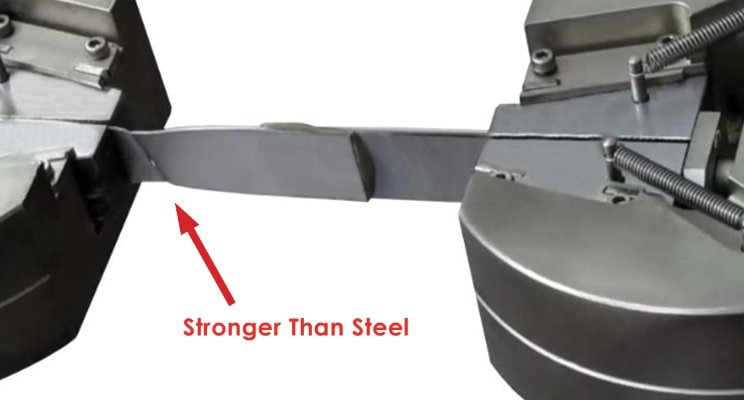Structural Adhesives

“Structural Adhesives” refers to any type of adhesive used to bond a load bearing joint required for a product’s structural integrity. These joints are the most vital bonds in a product because failure is disastrous to the product’s structure and purpose. As adhesive material technologies advance, manufacturers are progressively interested in how and when to use adhesives in structural bonding and what benefits are offered over welding, rivets. and other fasteners. This article will explain when adhesives are a good choice and compare normally used structural adhesives to alternative fastening techniques.
When to Choose Adhesives
Adhesives are frequently used in bonding automotive components, aerospace applications, and even in surface boats and sealing submarines. These industries have learned to employ adhesives due to cost, weight, time, performance, and aesthetic improvements or to unlock new possibilities that are not possible when using “traditional” fasteners. While appliance manufacturers have also started to utilize adhesives, the full value of adhesives is yet to be attained in this industry.
Expert manufacturers can identify when to pick adhesives over mechanical fasteners or welding and look for indicators in the manufacturing process and product environment. Instances of some main indicators are when manufacturing plans need bonding varied metals, if products have to endure thermal cycling or if galvanic corrosion is a risk. Adhesives are also specified if products have to be exposed to chemicals and/or water that may penetrate or damage other fastening approaches. Adhesives lessen differential expansion rates and offer an inert barrier between possibly corrosive metals in the first case and provide chemical resistance and a watertight seal in the second case.

Another collective reason to select adhesives is to reduce the weight of an end product. The early adopting industries stated above are all transportation industries where weight is of vital importance. Even a minor modification in weight to an airliner results in huge cost reductions over the life of the plane. However, one does not have to fly at 30,000 ft. to comprehend these benefits. Substantial fuel savings can be witnessed by lowering the weight of boats or cars as well and any decrease in weight may enable a product more portable, minimize shipping costs, or allow for the installation of extra components offering user’s product new abilities and a competitive lead.
Cost
The cost savings of adhesives can be attained in numerous ways. First, adhesives repeatedly offer lower material costs per application compared to mechanical fasteners; especially where high end or coated fasteners must be used. Second, there are cost savings because of decreased ordering, shipping, and stocking that can all be eliminated by a single adhesive. Third, the work involved with coating adhesives can be less than other fastening techniques. Consider the time needed to weld metals: the welder has to set up and gather equipment, perform the weld, inspect and touch up gaps, then file down sharp points or excess material. To finish, the weld may need to be polished and have any discoloration addressed. All of this labor can be prevented by using an adhesive.
Time
As stated above, the work involved in welding can be greatly reduced with adhesives, b what about nuts and rivets or bolts? Both of these techniques almost always involve various attachment points and every attachment point is another touch, repeated work, and extra labor required to create the product. Adhesives, by contrast, are usually applied across an area of the substrate in one step. It must be remembered that best practice for threaded assemblies used in structural bonds already needs the application of adhesives and sealants in the form of thread lockers. The application of thread sealants and thread lockers is yet another step that can be excluded by switching to structural adhesives.
One and two-part epoxies are the most frequently used structural adhesives. Earlier, a two-part epoxy has always meant the extra step of ratio mixing to prepare the adhesive for application but latest advancements in technology have resulted in the two-part – no mix products available these days. These products use disposable static mixing wands to mix a precise ratio of product during application. Progress like these continues to enhance the ease and speed of applying adhesives.
What about cure time? A rule regarding adhesives is: the longer the curing time, the stronger the resultant bond. However, while adhesives may require time to reach maximum strength, many adhesives can reach fixture or handling points within seconds to a few minutes and, even if more time is required, no human interaction is necessary while curing. Furthermore, enhancements to UV adhesives and cyanoacrylates make these formerly unlikely choices viable for low stress structural bonds and allow the instant cure property of these adhesives to be utilized.
Weight
Welding and most mechanical fasteners contain one main ingredient: metal. Metals are heavy in comparison with the lightweight polymers of adhesives and even small metal components can add major weight when multiple fasteners are required. This is one reason why the aerospace sector, for instance, has chosen adhesives as a solution to their light-weighting requirements.
Not only are adhesives considerably lighter but extra light-weighting gains can be made because of the nature of adhesives and the way they relate with substrates. Adhesives spread out the stress of a bond throughout the whole surface of the bonding area while spot welding and mechanical fasteners focus stress on the specific bonded points. This concentration of stress creates unpredictable performance requirements for the substrates frequently causing the whole component to be thicker or use extra material to support the stress concentrated at each point. This extra material in the components and joint faces also increases the weight of the entire product.
Performance
Consider what occurs when a mechanical fastener such as a threaded assembly is used to attach two substrates. Usually, the primary step in the process is to form a hole in both substrates through which the mechanical fastener will pass. This not only causes extra contamination routes that can compromise the interior of a product but the act of making a hole in the product is truly damaging structural integrity. The strongest and most robust component is not one with a dozen holes in it but a solid intact piece. Adhesives do not cause damage to user’s product when bonding components, so selecting adhesives can enhance product quality and the total structural integrity just by doing no harm!
New Possibilities
Adhesives provide a secret weapon to manufacturers. Adhesives can be pre-applied when a part or joint is reachable and cured later using anaerobic, chemical, or UV light activating techniques. Using adhesives, bonds can be created in places and sometimes when mechanical fasteners and welds are unfeasible or impossible techniques. This frees process engineers to be actually creative and allows new levels of productivity that are out of reach with “traditional” fastening approaches. When adhesives are the planned fastening technique from the preliminary design stages of a product, bonding surfaces for adhesives can be built in rather than retrofitted, as they usually are today, and the unique benefits of adhesives can be completely utilized.
The reasons to pick adhesives for structural bonding are wide-ranging. Cost, weight, time, performance, and aesthetics all have a role to play in the decision. For a majority of manufacturing applications, adhesives have crossed a critical point in advancement now effectively competing with alternative bonding approaches on longevity and strength while delivering clear advantages in manufacturing processes on quality, cost, and appearance. While the benefits of adhesives are clear, how to choose the right adhesive for user’s application may not be. A majority of adhesive manufacturers offer expert advice and are happy to discuss user’s product and manufacturing approaches in detail to guarantee that the user picks the precise adhesive. Some manufacturers, such as
Hernon Manufacturing,will even do more for customers by creating custom formulas and even designing tailor-made automated dispensing machines to guarantee integration into the customer’s assembly process goes effortlessly.



